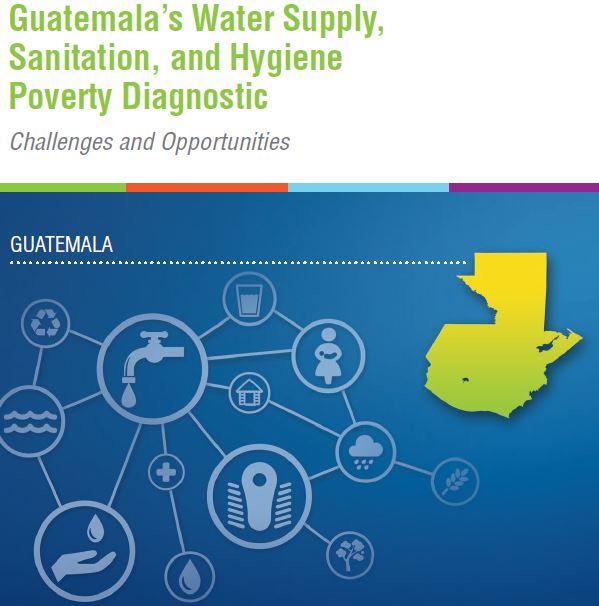Guatemala’s Water Supply, Sanitation, and Hygiene Poverty Diagnostic Challenges and Opportunities
Poverty rates in Guatemala are among the highest in Latin America and the Caribbean, and Guatemala is now the second poorest country in the region with only post-earthquake Haiti being poorer. Furthermore, Guatemala is an extreme outlier in the region in terms of chronic malnutrition and almost half of all children in the country suffer from stunting. In general, access to basic infrastructure, particularly access to improved drinking water and sanitation, is critical to improving health and reducing poverty. Yet more than half of Guatemalans lack access to improved sanitation and little progress has been made in reducing chronic malnutrition. Extreme disparities exist between geographical areas, and the rural population remains disproportionately disadvantaged, while the extreme poor and indigenous are more consistently and persistently excluded. Given the challenges associated with expanding coverage in rural areas, these results are not particularly surprising. Because of the number of low-density communities of variable topographies which only have minimal transport and other basic infrastructure, access to rural communities is limited. This leads to a reduced availability of goods and materials, difficulties establishing supply chains, decreased economies of scale, and ultimately high costs per capita. Moreover, regulatory and legal frameworks prioritize urban areas, which leads to the absence of a dedicated sector policy that clearly defines the provision and quality of services for rural users. Geographical remoteness increases political and administrative isolation, and rural communities are often overlooked by the central government, even though community water supply, sanitation, and hygiene (WASH) service providers ultimately depend on the central government for training, technical capacity, and long-term, post-construction support. The limited resource base of rural areas, which are home to a higher percentage of low-income households, renders communities highly dependent on external sources of funding. However, the lack of effective regulations governing community service providers affects the performance of these providers and impedes their ability to access alternative sources of funding. This report seeks to understand this paradigm through a careful examination of trends in access to water supply and sanitation and in corresponding linkages to poverty and health. It also reviews the governance structure and expenditure plans underpinning service delivery in the WASH sector in Guatemala. The report’s main findings suggest that the challenges facing the WASH sector in Guatemala are significant and will require, among other things, stronger political leadership to successfully reform and regulate the sector, greater focus on rural sanitation, and increased spending and budget execution.
